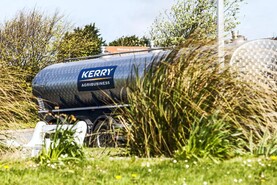A rigorous TB control plan introduced in Co Monaghan last September is beginning to show steady improvement, with hopes of continued progress.
Monaghan has the highest incidence of TB in the country, with 4.57% of herds having at least one reactor in 2019. The incidence in the rest of the country is 2.64%.
Those located in blackspots are subject to more frequent testing, farmers at an Irish Cattle and Sheep Association (ICSA) meeting heard from Michael Smith, regional veterinary officer with the Department of Agriculture.
There are 23 Monaghan district electoral divisions (DEDs) currently listed as TB blackspots, which is down from a peak of 30 early in the New Year.
Smith emphasised the Department was trying to strike the balance between de-listing DEDs as blackspots and dropping them out too quickly.
Where a herd in a blackspot area has a breakdown, all neighbours within 150m are tested once every four months. Those in a blackspot but not within 150m of a breakdown herd are tested twice a year, called a contiguous test.
Smith acknowledged the hardship this creates for the farmers involved but stressed that more frequent, targeted testing had played a part in reducing the number of TB infected herds.
He said herds were now being identified earlier and had lower numbers of reactors.
To date, there have been 351 reactors in Monaghan with 154 herds currently restricted. At its peak, there were 232 herds restricted. Farmers at the meeting raised numerous concerns about badgers.
Smith reassured them there was an additional focus on wildlife in the control plan, with the number of wildlife teams increased from two to three.
These three-man teams are involved in the culling and vaccinating of badgers. They have culled 314 badgers since October 2018.
Read more
TB testing frustration: farmers' questions answered
There are no easy decisions left on TB - ICSA meeting
A rigorous TB control plan introduced in Co Monaghan last September is beginning to show steady improvement, with hopes of continued progress.
Monaghan has the highest incidence of TB in the country, with 4.57% of herds having at least one reactor in 2019. The incidence in the rest of the country is 2.64%.
Those located in blackspots are subject to more frequent testing, farmers at an Irish Cattle and Sheep Association (ICSA) meeting heard from Michael Smith, regional veterinary officer with the Department of Agriculture.
There are 23 Monaghan district electoral divisions (DEDs) currently listed as TB blackspots, which is down from a peak of 30 early in the New Year.
Smith emphasised the Department was trying to strike the balance between de-listing DEDs as blackspots and dropping them out too quickly.
Where a herd in a blackspot area has a breakdown, all neighbours within 150m are tested once every four months. Those in a blackspot but not within 150m of a breakdown herd are tested twice a year, called a contiguous test.
Smith acknowledged the hardship this creates for the farmers involved but stressed that more frequent, targeted testing had played a part in reducing the number of TB infected herds.
He said herds were now being identified earlier and had lower numbers of reactors.
To date, there have been 351 reactors in Monaghan with 154 herds currently restricted. At its peak, there were 232 herds restricted. Farmers at the meeting raised numerous concerns about badgers.
Smith reassured them there was an additional focus on wildlife in the control plan, with the number of wildlife teams increased from two to three.
These three-man teams are involved in the culling and vaccinating of badgers. They have culled 314 badgers since October 2018.
Read more
TB testing frustration: farmers' questions answered
There are no easy decisions left on TB - ICSA meeting






 This is a subscriber-only article
This is a subscriber-only article









SHARING OPTIONS: